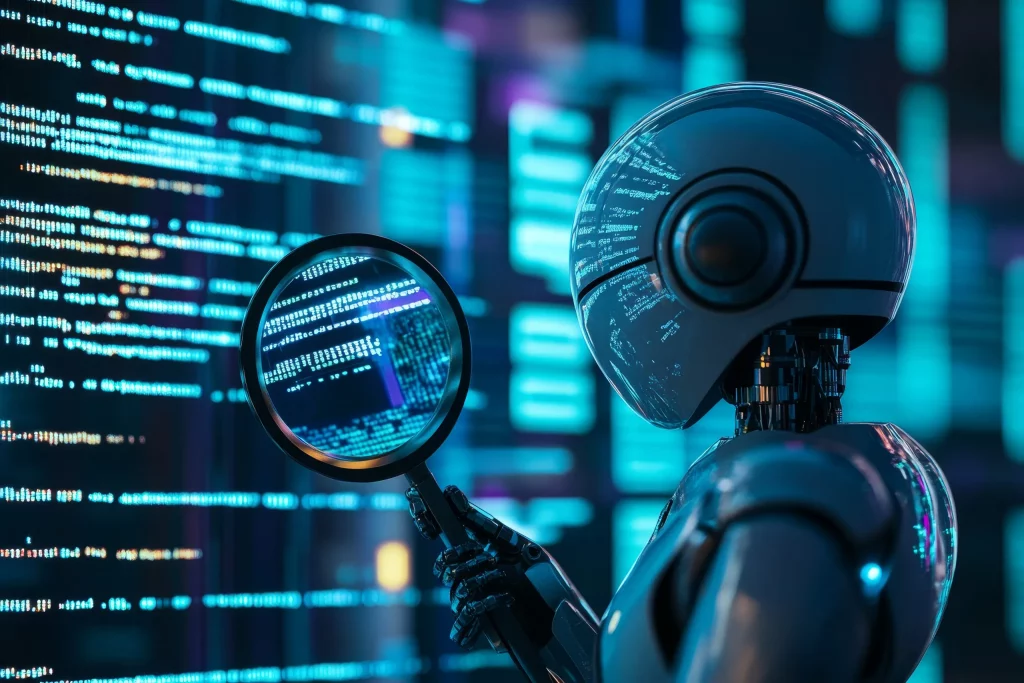1. Introduction
Artificial Intelligence (AI) and Blockchain are two of the most transformative technologies of the 21st century. AI brings the power of intelligent decision-making, automation, and data analytics, while Blockchain offers decentralization, transparency, and immutable data integrity. When combined, these technologies have the potential to reinvent entire industries, foster new business models, and solve longstanding challenges related to trust, data ownership, and operational efficiency.
As AI continues to learn and make predictions, and Blockchain continues to provide verifiable, tamper-proof records, their intersection is giving rise to powerful trends across finance, healthcare, supply chains, governance, and more. Below, we explore the key industry trends emerging from the fusion of AI and blockchain.
2. Data Sharing and Monetization in a Decentralized Ecosystem
Trend: Trusted and Fair Data Marketplaces
One of AI’s major limitations is access to high-quality, diverse datasets. On the other hand, Blockchain enables secure, transparent data sharing without a central authority. Together, they make it possible to create decentralized data marketplaces, where users can own, control, and monetize their data.
- Use Case: A patient can allow researchers or pharmaceutical companies to access anonymized health data stored on a blockchain, and be compensated automatically through smart contracts.
- Impact: Encourages data diversity and democratizes AI training, removing monopolies over data held by tech giants.
3. Autonomous and Transparent Decision-Making Systems
Trend: Auditable AI
AI models often operate as “black boxes”—making decisions that are difficult to explain. When integrated with blockchain, AI decision-making can be recorded immutably, making it auditable and verifiable.
- Use Case: In finance, AI algorithms making lending or credit decisions can log their logic and outcomes on a blockchain, enabling transparency and accountability.
- Impact: Increases trust in AI systems, especially in regulated industries like banking, insurance, and healthcare.
4. Secure and Decentralized Edge Computing
Trend: Smarter IoT at the Edge
With the rise of Internet of Things (IoT) devices, processing data at the edge (locally) is becoming critical. AI can make real-time decisions, while blockchain ensures secure device authentication and data integrity.
- Use Case: In autonomous vehicles or smart factories, sensors and edge devices can analyze data locally using AI, while logging actions or decisions on a blockchain for verification and coordination.
- Impact: Enables scalable, secure, and autonomous systems with reduced reliance on centralized infrastructure.
5. Decentralized Autonomous Organizations (DAOs) with AI Governance
Trend: Intelligent DAOs
DAOs are organizations governed by code and community rather than centralized leaders. With AI integration, DAOs can evolve to become self-improving, adaptive, and more efficient in decision-making.
- Use Case: A decentralized investment fund (a DAO) powered by AI could analyze market trends and automatically rebalance its portfolio, with all decisions recorded on the blockchain and voted on by token holders.
- Impact: Creates more resilient, data-driven, and autonomous governance models in business and community ecosystems.
6. Enhanced Cybersecurity and Fraud Detection
Trend: AI-Powered Threat Monitoring on Blockchain Networks
Blockchain ensures data cannot be tampered with, and AI can continuously monitor systems for anomalies and security threats. Together, they create robust, self-defending digital infrastructures.
- Use Case: In decentralized finance (DeFi), AI models can analyze transaction patterns to detect fraud in real-time, while blockchain ensures that data integrity is maintained.
- Impact: Strengthens trust and security in both centralized and decentralized systems.
7. Improved Supply Chain Transparency and Predictive Logistics
Trend: Intelligent, Trustless Supply Chains
Blockchain provides provenance and transparency, while AI predicts and optimizes supply chain operations such as inventory management, shipping routes, and demand forecasting.
- Use Case: A food supply chain can use IoT sensors to monitor temperature and location, storing data on blockchain. AI can then predict spoilage or delays and suggest alternate logistics strategies.
- Impact: Reduces waste, increases efficiency, and improves compliance with regulatory standards.
8. Ethical AI and Data Sovereignty
Trend: Human-Centric AI Governance
Blockchain allows individuals to retain ownership over their data, and AI models can be trained in privacy-preserving environments (e.g., federated learning) using blockchain to verify participation and compensation.
- Use Case: A decentralized healthcare research platform enables users to contribute health data to train an AI diagnostic model. Their contributions are logged on the blockchain and rewarded with tokens.
- Impact: Encourages ethical data sharing and democratizes the development of AI models.

9. Tokenization of AI Services
Trend: On-Demand, Tokenized AI Models
AI algorithms can be offered as decentralized services, where users pay with tokens to access computing power or specific AI capabilities.
- Use Case: Developers upload their AI models (e.g., for speech recognition or image analysis) onto a decentralized marketplace. Businesses can then access these models using blockchain-based payments.
- Impact: Lowers the barrier for AI access, fostering innovation among small businesses and startups.
10. Financial Services: Smarter DeFi with AI
Trend: AI-Augmented DeFi Ecosystems
In decentralized finance, AI can enhance services such as risk assessment, portfolio optimization, and automated market making.
- Use Case: AI analyzes market volatility and user behavior to recommend optimal yield farming strategies or detect suspicious trading patterns, while blockchain executes and verifies actions.
- Impact: Makes DeFi more user-friendly, efficient, and secure—attracting broader adoption.
11. Challenges and Considerations
Despite the promise, combining AI and blockchain also introduces new complexities:
- Scalability: Blockchains are slower than traditional databases; recording large AI-generated data sets can strain performance.
- Energy Consumption: AI and some blockchain protocols are both computationally intensive; sustainability is a concern.
- Data Privacy: Storing sensitive AI training data on-chain may violate privacy standards unless carefully designed (e.g., via zero-knowledge proofs).
- Regulation: New legal frameworks will be needed to govern hybrid AI-blockchain systems, especially when they automate decision-making in critical industries.
12. Conclusion
The fusion of AI and blockchain is ushering in a new era of transparent intelligence, where systems are not only smart but also trustworthy, decentralized, and verifiable. This convergence is set to drive innovation across finance, healthcare, manufacturing, logistics, governance, and beyond.
As we move forward, industries that embrace this dual revolution—by addressing technical and regulatory challenges—will gain a significant competitive advantage. The future will belong to systems that are not only intelligent but also accountable, inclusive, and empowering for all stakeholders.
















































